-
Posts
309 -
Joined
-
Last visited
Content Type
Profiles
Forums
Calendar
Posts posted by byte
-
-
Hello Everyone:
Long time since I posted here, but have a question.
My dog may have swallowed 4 lead? weights that are used to hold togehter the aquatic plants at the stores? I have always heard them referrred to as made of lead. Since the plants come out of singpore, asking the shippers is hard. My vet needs to know the types and amounts of metals in these thin metal strips. Any one have ideas?
Thanks for the help :P
byte
-
I have been playing with LED diodes for a few years now. Look at the mcd rating of the bulbs and the amount of current they consume. That will give you a fair idea of the output. As soon as you get into 1 watt or bigger LEDs, you need to have heat sinks as well.
Cree makes good stuff --- http://www.cree.com/products/ledlamps.asp
-
The best results from a drop checker will be with 4dKh solution. You can buy it here...
http://www.greenleafaquariums.com/co2-drop-checkers.html
or make it yourself, but you need centigrade scale and very accurate flask.
http://www.theplantedtank.co.uk/co2.htm

-
You can gently pull the new growth and get many plants all hooked together, then cut the runner. Plant the extra along the back glass to make a background all the way across. Are you using giant val? I found the shorter varieties work better in smaller tanks.
-
I was back to the nest again today and the baby owl has changed lots in 2 weeks.
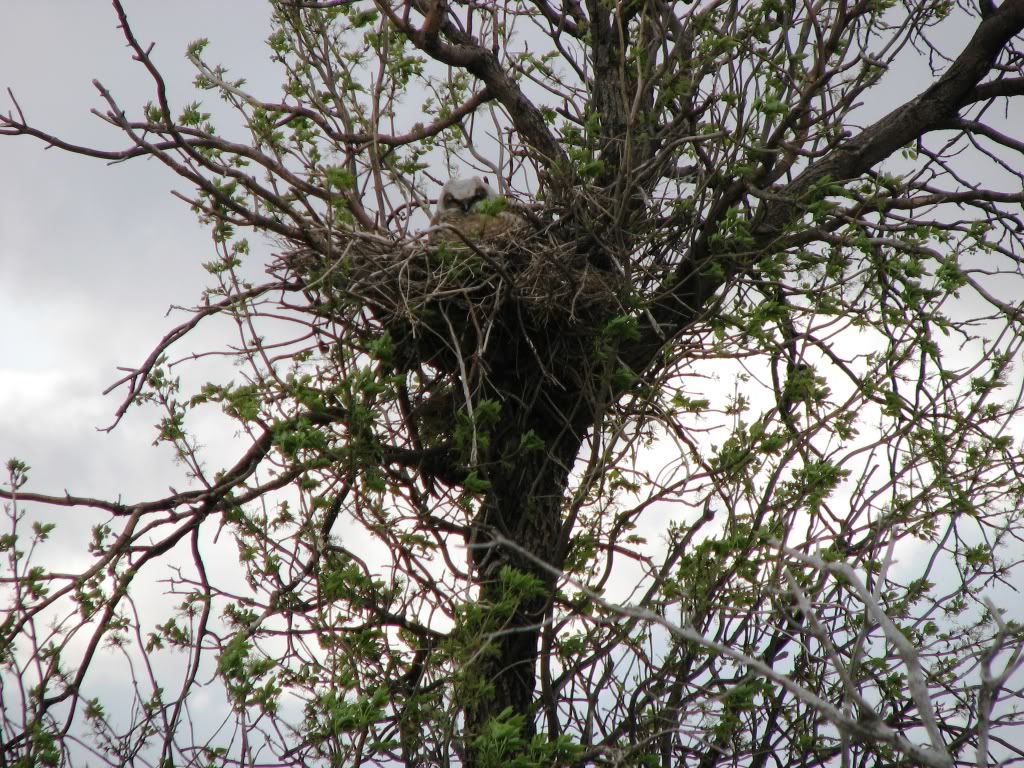


-
My goldfish leave the anubias nana alone.
-
I have not tried this product, but I have bought lots of aluminum polishing products from this company.
http://www.caswellplating.com/buffs/glass.htm
They have a great forum for info on how to use the products.
http://forum.caswellplating.com/
If you try one, please let me know how it works.
-
plus I only have 1 mb of space.
Send a PM to Tanker and he will increase your gallary on AA to 100 mb.
-
I found a owls nest next to the road where I could stand up in the back of a semi and take some pictures...
Mom Owl flew away when I parked. Baby owl is not too worried about me.

A hawk flew overhead and mom is back to the nest in a hurry.
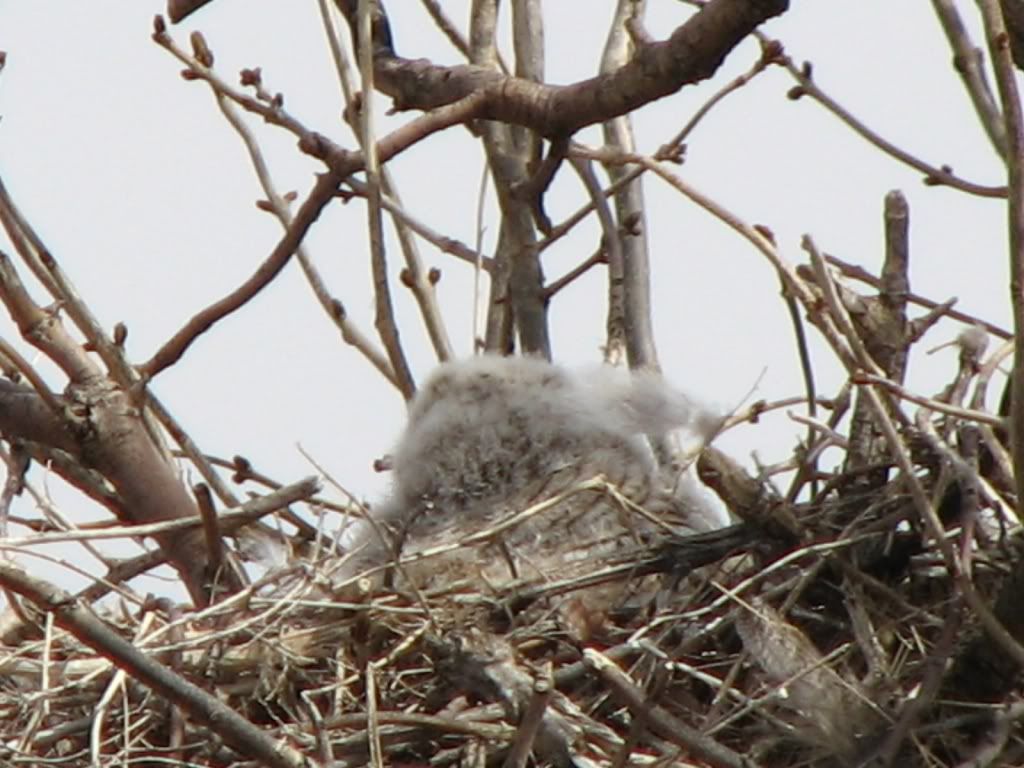
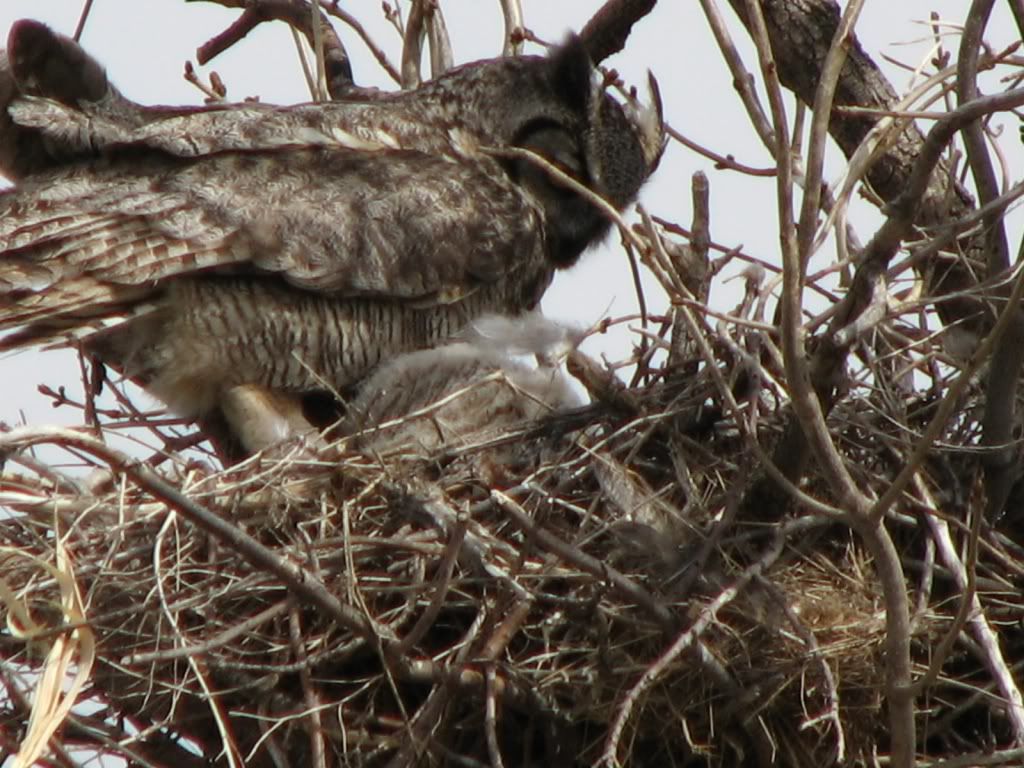
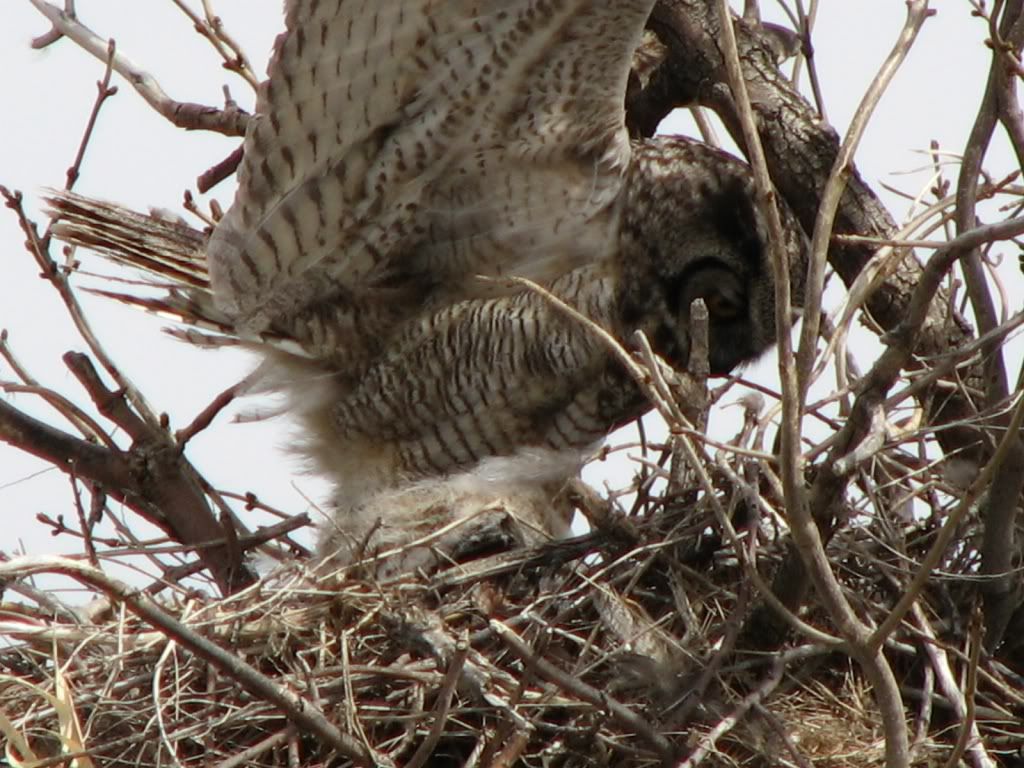



The above pictures were taken in less than 30 seconds from first to last.
Baby comes back up for a look around.

-
It's not just that they think you will be making bombs out of it. KNO3 is an explosive material and you need a special liscence to transport larger quantities. Which is probably why most places don't sell very large amounts at a time. And I hope if you are buying bulk like that, that you are keeping it outside in your shed or garage and not in your house. Have you ever checked any garden centers for the stuff? I myself go to quikgrow here in Calgary, but have never bought that large of a quantity.
KNO3 is not an explosive material, it is an Oxidant (will accellerate a flame). The common name is Salt Peter and can be bought at a drug store. I am a farmer and we used to buy this material by the semi truck load. KNO3 only becomes explosive when mixed with another common liquid and even then it will only burn when subject to a flame. To make a boom, it has to be ignited by an explosion (dynamite or blasting cap).
It is amazing all the places KNO3 is used:
http://en.wikipedia.org/wiki/Potassium_nitrate
"Potassium nitrate is also used as a fertilizer, in amateur rocket propellant, and in several fireworks such as smoke bombs.
In the process of food preservation, potassium nitrate has been a common ingredient of salted meat since the Middle Ages,[6] but its use has been mostly discontinued due to inconsistent results compared to more modern nitrate and nitrite compounds. Even so, saltpeter is still used in some food applications, such as charcuterie and the brine used to make corned beef.[7] Sodium nitrate (and nitrite) have mostly supplanted saltpeter's culinary usage, as they are more reliable in preventing bacterial infection than saltpeter. All three give cured salami and corned beef their characteristic pink hue.
In the European Union, it is referred to as E252.
It is commonly used in manufactured cigarettes to maintain an even burn of the tobacco.[8]
As a fertilizer, it is used as a source of nitrogen and potassium, two of the macro nutrients for plants. The other macro nutrients are carbon, oxygen, and hydrogen.
Potassium nitrate is also the main component (usually about 98%) of tree stump remover; it accelerates the natural decomposition of the stump.[9]
Potassium nitrate is also commonly used in the heat treatment of metals as a solvent in the post-wash. The oxidizing, water solubility and low cost make it an ideal short-term rust inhibitor.
It has also been used in the manufacture of ice cream and can be found in some toothpastes for sensitive teeth.[10] Recently, the use of potassium nitrate in toothpastes for treating sensitive teeth has increased dramatically, despite the fact that it has not been conclusively shown to help dentine hypersensitivity.[11]
Potassium nitrate is also one of the three components of black powder, along with powdered charcoal (substantially carbon) and sulfur, where it acts as an oxidizer. When subjected to the flame test it produces a lilac flame due to the presence of potassium. [12]"
Everybody uses it... but we can't buy it???
-
I was at the local fertilizer dealer to pick up a load (22,000 lbs) of Nitrogen which is 46-0-0 (Carbonyldiamide, CH4N2O, or urea). We used to be able to buy 37-0-0 Nitrogen (KNO3) in bulk, but due to anti-terrorism laws, they can not even bring in a 50 pound bag for me either. I will try 2 other chemical places as I would like to buy a bag of KNO3 also.
-
I would be careful with vermiculite as I think it will float to the top of the tank if given a chance.
-
byte:
Do you have that foil inside under the gravel or under your tank?
The foil insulation goes between the stand and the bottom of the tank. I have even used it as a background. It is plastic bubble wrap with foil on both sides. Some has 2 layers of bubble wrap, but most have 1.
-
Nature's has some, saw it yesterday.
Nature's?? havent heard of that one... where are they?
Edmonton is a big place...
Nature's Corner Store
9082-51 Ave NW
Edmonton, AB T6E 5X4
780-433-3474
www.NaturesCornerStore.com
-
I have never heard anything bad about running moonlights, I believe it is needed for some corals in a SW setup. Some of the benefits I have heard and seen are watching fish at night and less fish "jumping" out of open tanks.
Here is a thread on DIY moonlights using LD bulbs.
-
I don't know how much it helps, but I put my tanks on a layer of reflective foil insulation that has a R-5 insulation value.
-
I ordered the 6 pack of bulbs a year ago and they shipped without breaking, but I was worried they would not make it.
-
You can mix a batch of flourish excel and water and dip the plants as well.
I used a 1:25 ratio with no problems.
http://www.plantedtank.net/forums/algae/80720-excel-dip.html
-
I have used the seachem flourish and tropica capsules and I prefer the seachem ones as the little tropica balls seem to surface a long time after they were put in. Ask Dry Dock, they even look like eggs when they do...
-
Sent in pics last night. Also sent in a cool shot of my Hemianthus callitricoides pearling, First time that plant has ever done that.
Good Luck
-
Would love some of that stuff, there is also another type of moss I want, just can't remember the name off hand. I saw it on aquabid but would be coming from over seas.
Here is a list of moss/fern type plants: http://www.plantgeek.net/plantguide_list.p...amp;filter_by=5.
-
One week later the tank is coming along nice. The floating and stem plants are doing great, except one of the new plants (Limnophila aromatica) that I really wanted to get going. The new fish have been added along with an extra established filter.
March 18-2009
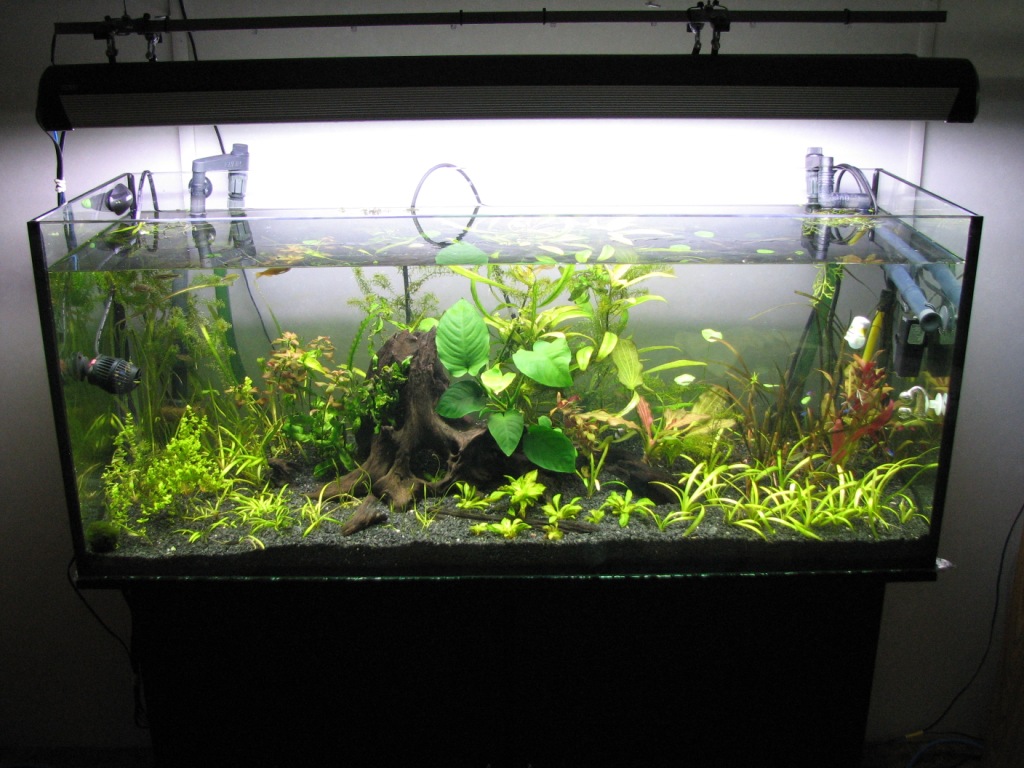
March 24-2009

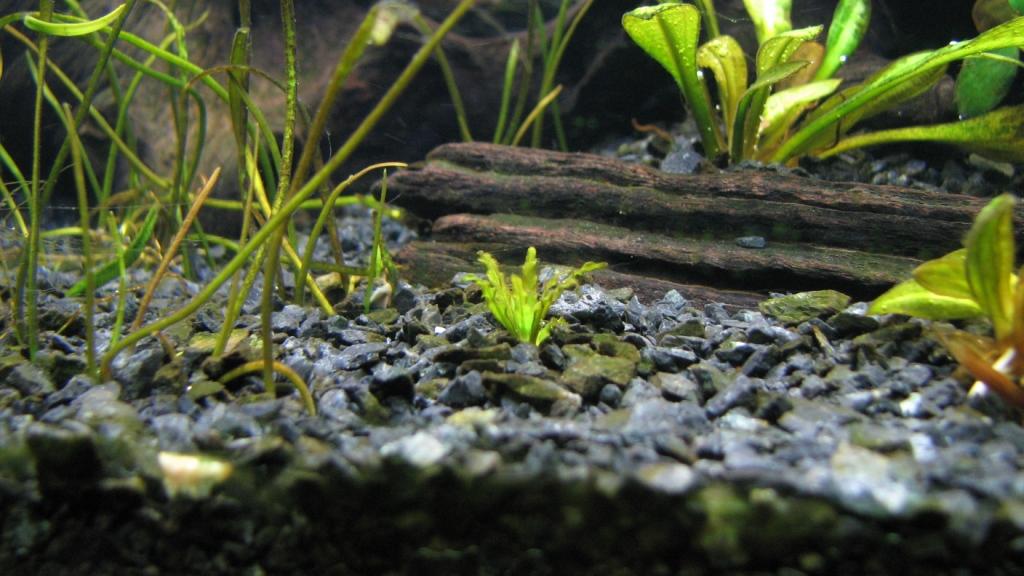
Now the setup of this tank is complete, I will start a new thread to watch things grow (hopefully plants).

-
Could you replace the 90 degree elbows on the reactor with straight fittings? Or maybe remove some of the bio-balls from the reactor might help as well. From what I have read, the reactor will reduce the pressure a bit, but it should not cut it by 50%.
-
Do lots of reading about tropheus, they are very hard to keep after they get to breeding age. They are also very aggressive fish and have very strict feeding requirements.
I have to disagree with this statement. I have had a breeding colony of 14 adults for 15 months. I have approximately 20 juveniles of different ages. The aggression is very minimal if you have the tank stocked appropriately. My 1/2 inch fry swim actively with the 4" males. As for care, regular water changes and the appropriate diet are all that is required. I do however think they are best in a species only tank. I only have one pleco in with mine.
I didn't believe the stuff about aggression and proper feeding either... Until I watched a big tank (130 gallon) with tropheus slowly die off one a day. This tank had raised many, many fry and was running about 12 months, then after a two week holiday with fish-sitters, the problems started. The main tank and the fry tank both were affected and they went from having 150 tropheus (with all the fry) to almost none left. We both have many types of fish and tanks (over 800 gallons) and no other fish or tanks were affected. They figure the fish-sitter fed a little too much when they were gone. Even 3 months after the holiday, they were still losing 1 fish a day.




Dog Eats Lead? Plant Weights
in Fish Emergencies
Posted
Hello everyone and tanks :P for the replys.
I thought like most, the only danger would be the objects might not pass and cause a blockage. After 2 days, I consulted my vets and was shocked to learn that if the weights were lead and he did injest them, he would all ready have lead poisioning and they would be able to do nothing. Not being able to get a idea of the material used as the strips and plants come from Singapore, we did and exray of lil Scrappy dog (20 pounds) and found no metal in his body *Smiles* Since he is showing no signs of poisioning about 4 days after, we think that he may have not ate the strips, just the foam that wraps the plants. A blood test was also taken and the lab results will show lead if it is present.
Be careful with these weights, i never imagined the foam would be something a dog would eat. If those weights are lead (I suspect they are), they are very deadly to pets or kids.
Thanks again and happy fishing